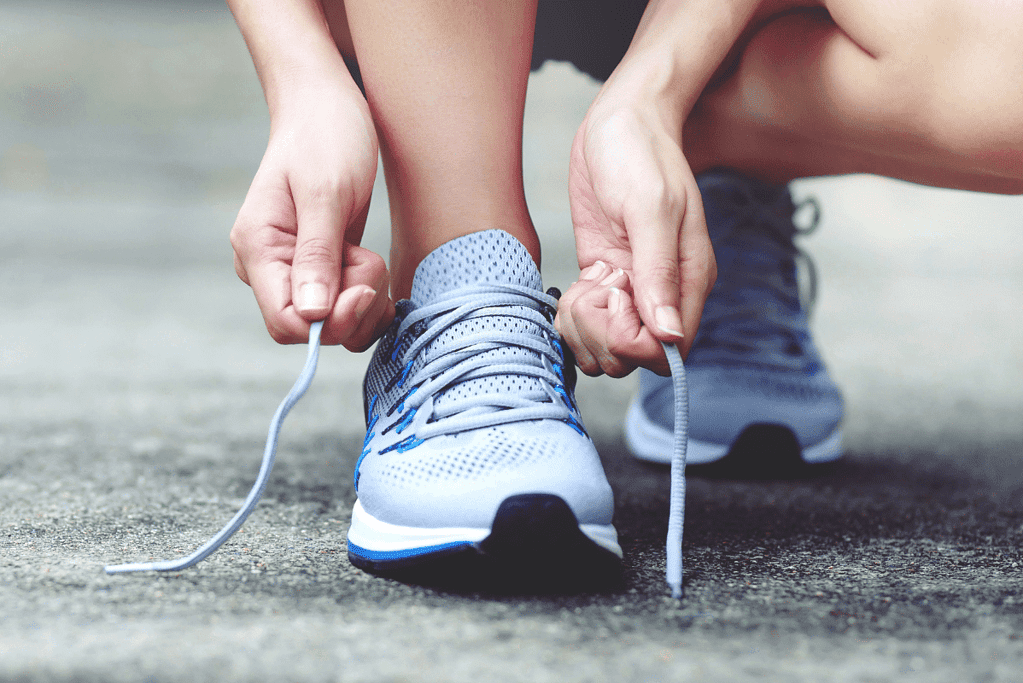Walking is often touted as the perfect exercise, especially for beginners, because it’s low-impact, easy to do, and requires no special equipment. Walking also has many health benefits, including weight loss. But how much walking do you really need to do to see results, according to science?
The answer depends on a few factors, including your weight, fitness level, and walking speed. Read on to learn how much to walk to lose weight.
Why Walking is Great for Weight Loss

Walking is a great way to lose weight. It’s low-impact, meaning it’s gentle on your joints, and it’s an easy exercise to get started with. You can walk anywhere, anytime, and you don’t need any special equipment. Best of all, walking is free and available to most people. So here is why walking is good for weight loss:
Burns Calories
When you are trying to lose weight, diet and exercise are crucial for success. To lose one pound per week you need to have a calorie deficit of about 500 calories a day. This deficit can come from a combination of eating a healthy diet with fewer calories and exercising more.
Walking is a great way to get your heart rate up and to work up a sweat, and it can also help you burn calories. So how many calories does walking burn? It depends on a few factors, such as your weight, the intensity of your walk, and the time you spend walking. But the average person can expect to burn about 100 calories per mile, according to several studies.
Not only will you burn calories, but walking will also improve your cardiovascular fitness and energy levels, both of which are important for your fitness journey. So if you’re looking to shed some pounds, put on your walking shoes and hit the pavement.
Reduces Belly Fat
It’s no secret that exercise is good for you. But did you know that walking is one of the best exercises for reducing belly fat? That’s right – a simple walk can help you slim down and tone up your midsection.
Regular aerobic exercise like walking has been shown to reduce belly fat. Two studies are particularly encouraging. One 12-week study found that people who followed a calorie-controlled diet and walked one hour five days a week lost more body fat and inches off their waist than those who only dieted.
Another study showed that obese women who walked for 50-70 minutes three times a week for 12 weeks reduced their waist circumference and body fat. The exercise group saw a significant reduction in subcutaneous fat (fat under the skin) and visceral fat (fat within the ab cavity) compared to the control group.
So if you’re looking to trim down your waistline, be sure to add some walking to your daily routine. And if you need some motivation, remember that every step you take gets you one step closer to your goal.
Preserves and Strengthens Muscles
When you reduce calories and lose weight, you will not only lose body fat but oftentimes muscle as well. Sadly, this is counterproductive. Since muscle burns more calories, over time it will be harder for you to burn as many calories as you did when you started your weight loss journey. However, physical activity, such as walking, helps preserve lean muscle when you lose weight.
Walking will also strengthen your muscles and improve your muscle endurance. This means you’ll burn more calories even when you’re at rest. This will make it easier for you to eventually walk longer and faster.
Furthermore, your balance and coordination will also improve. To boost your weight loss even more, when you’re ready, you can add strength training twice a week.
Helps Maintain Weight loss
When you preserve and build your lean muscle mass you are also helping to keep the weight you lost off. As you may know from personal experience, most of us regain all (and sometimes even more) of the weight we’ve lost. However, regular exercise like walking can help maintain your weight loss.
Improves Sleep
There is a connection between weight and quality of sleep. Studies have shown that people who don’t get enough sleep are more likely to gain weight. This is because when we’re tired, we’re more likely to make poor food choices and we’re less likely to have the energy to exercise. Not getting enough sleep also disrupts the normal function of your metabolism, making it harder for your body to burn calories.
However, people who exercise regularly sleep better than those who don’t. They also tend to sleep for longer periods of time and have less trouble falling asleep.
There are a few reasons why exercise is good for sleep. Exercise helps to regulate the body’s sleep-wake cycle. And finally, it can increase the amount of time you spend in deep sleep, which is the most restful stage of sleep.
Relieves Stress
Like sleep, stress can affect your weight. When you’re stressed, your body releases a hormone called cortisol. Cortisol makes your body store more fat, especially in the abdomen. Cortisol also increases your appetite, so you’re more likely to eat more when you’re stressed. In addition, stress can lead to behaviors like comfort eating, which can cause weight gain.
Fortunately, walking has been shown to lower levels of the stress hormone cortisol, and it can also help to increase levels of endorphins, which are hormones that boost mood. Furthermore, walking is a form of moving meditation, and it can be a great way to de-stress after a long day.
Other Benefits of Walking

In addition to weight loss and weight management, walking has numerous other health benefits, including:
- Preventing or reducing your risk of various health conditions, including heart disease, stroke, high blood pressure, cancer, and type 2 diabetes
- Strengthening your immune system
- Boosting your mood, cognition, and memory
Generally, the more frequently, quickly, and longer you walk, the more advantages you’ll get.
How Much to Walk to Lose Weight

There are at least three questions most people have when they start a walking program for weight loss. How often should I walk? How fast should I walk? And how long should I walk?
How Often Should I Walk?
Most experts agree that you should exercise at least five days a week for good health. It’s also important to have a rest day every 7 to 10 days to allow your body to recover.
Five days a week may be a lot to start, so feel free to start with three days a week and slowly work your way up to five or six days a week.
How Fast Should I Walk?
A general rule of thumb is that you need to walk at a pace of 3 to 4 miles per hour, which is considered a brisk pace or moderate intensity for fit adults, to burn enough calories to see results. On the low end, you will complete a mile in 20 minutes, and at the high end in 15 minutes.
If you’re just starting out, you may not be able to walk for 20 minutes straight. That’s okay! Start with a short walk, and gradually increase the pace as you get more comfortable.
To gauge your speed, a brisk pace will allow you to talk, but not sing. You can also use a smartwatch such as Fitbit or Apple watch, for a more accurate measure.
How Long Should I Walk?
According to the American College of Sports Medicine, for health benefits, you need to walk at a brisk pace, around 3 to 4 miles per hour, for at least 150 minutes per week. If you walk five days a week, that’s equivalent to a 30-minute walk and about 1.5 to 2 miles each day.
For weight loss, however, that recommendation increases to 250 minutes per week at a brisk pace. I know this sounds like a lot, but don’t panic. That’s 50 minutes 5 days a week or approximately 42 minutes 6 days a week.
Once again, if you are not physically active, start at your own pace and increase the duration and distance when you’re comfortable. You don’t have to go for a long walk when you start your walking routine.
If 40 or 50 minutes is too much for you try walking twice a day. Remember to start slow and focus on consistency to see the best results. As you get more fit, you can increase the frequency, time, and distance of your walks.
How Much to Walk to Lose Weight Chart
The following chart summarizes the data on how much to walk to lose weight. Of course, the amount of walking you’ll need to do to lose weight will depend on factors like your starting weight, fitness level, age, and sex.

Obviously, there’s more to losing weight than just burning calories. You also need to eat a healthy balanced diet and watch your calorie intake. It will be difficult to lose weight, no matter how much you walk, if you eat a lot of junk food, fast food, or highly processed foods.
But if you’re looking to lose weight, walking is a great place to start and this chart should give you a good idea of how much you need to walk to get started on your weight loss journey.
Getting Started

Remember, the best way to start is to walk at a pace that is comfortable for you and to stick with it. Here are a few other tips to get started and make the most of your walking workout:
- Wear comfortable, supportive shoes. Choose walking or running shoes with proper arch support, a firm heel, and thick flexible soles to cushion your feet and absorb shock.
- Dress in comfortable, loose-fitting clothes that are appropriate for all types of weather. In cooler weather, wear layers. Moisture-wicking fabrics will keep you more comfortable. If you walk outdoors when it’s dark, wear bright colors or reflective elements so you can be seen.
- Wear a hat to keep you cool or warm, according to the weather.
- Don’t forget your water bottle, sunscreen, and sunglasses.
- Choose a route that is safe and easy to walk on. A flat surface is best for beginners. Avoid sidewalks or paths that are uneven, cracked, or have potholes, or trees with low-lying limbs.
- Warm up your muscles by walking slowly for 5 to 10 minutes.
- When your walk is over, cool down by walking at a slower pace for 5 to 10 minutes.
- Walk outdoors if you can, but walking indoors on a treadmill is also effective. You can also walk indoors at a shopping mall. Some malls are open early for walkers.
- Listen to your favorite songs or podcasts to stay motivated.
- If you can, walk with a friend or family member. Walking with someone else often increases the amount of exercise someone will be able to do.
- Track your progress to keep motivated.
- If possible, use a fitness tracker (e.g., Fitbit, Apple watch), walking app, or pedometer to track your time, distance, heart rate, and calories.
Proper Walking Technique
There’s a lot that goes into proper walking technique. But don’t worry, I’m here to give you a quick rundown of the basics.
- Stand up straight, keep your shoulders back and your chin up. Your back should be straight, not arched forward or back.
- Keep your head up, and look forward, not at the ground.
- Relax your neck, shoulders, and back.
- Your abs should be slightly tightened.
- Take smooth, even strides. This means not over-striding or taking too small of steps.
- Roll your foot from heel to toe.
- Swing your arms freely, with a slight bend at the elbows as you walk. This helps you maintain balance and keep your body moving forward. Feel free to pump your arms a little bit if you’re comfortable.
By following these simple tips, you can ensure that you’re walking with the proper technique.
Lace Up and Start Today!

How much to walk to lose weight will depend on a number of factors, including your starting weight, your fitness level, age, and sex. A general rule of thumb is that you need to burn more calories than you consume each day to get rid of the extra pounds.
To lose weight, aim to walk for 250 minutes a week. These minutes can be done 5 or 6 days a week. To see results. your pace should be 3 to 4 miles per hour.
Additionally, walking has other positive effects on your overall health. Daily walks are an effective way to reduce your risk of several diseases and boost your immune system. It can even improve your mental health.
So what are you waiting for? Lace up and start walking today.



